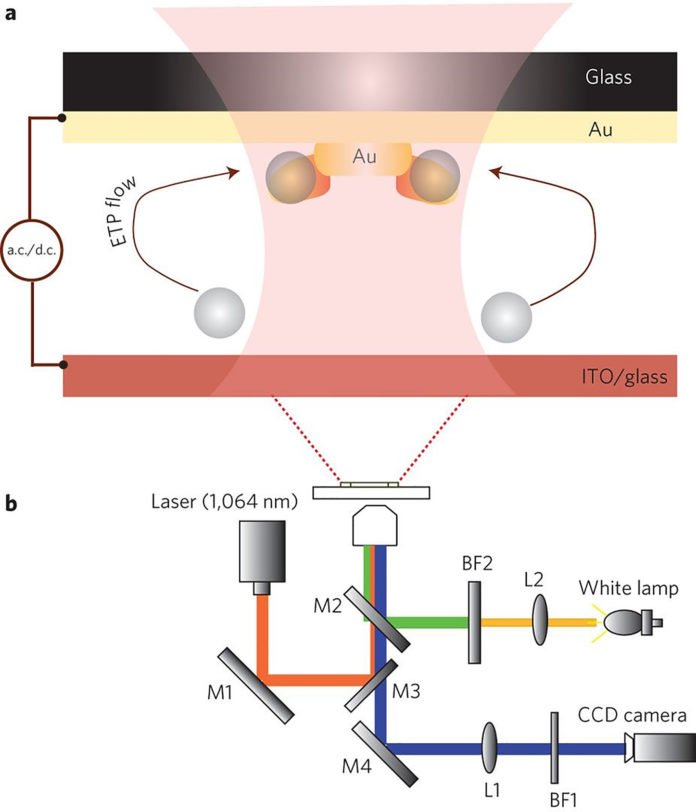Scientists at the Purdue University have come up with an innovative approach for detecting and diagnosing a tumor or a viral disease. They have developed a new class of optical nanotweezers to detect biomolecules, virus and DNA more quickly.
Scientists developed the nanotweezers from a nanostructured plasmonic metafilm. Initially, they made nanoscale holes in a gold film. Doing this, the metafilm acts as a tweezer and capture by shedding light on the film and heating some specific spots and creating local thermal gradients in the ambient liquid. This produces a small tornado-like effect.
The metafilm composed of thermal and electric fields to generate hydrodynamic flows that outcome in the fast transport of suspended particles, conveying them to the surface of the metal film for simple catching and recognition.
Scientists noted the system could potentially sort these modest particles and afterward, all in all, identify arranged examples, for example, drug contaminants or water impurities. In other words, the technology is more robust in trapping and detecting molecules than previous comparable lab-on-a-chip systems.
Alexander Kildishev, an associate professor with Purdue’s School of Electrical and Computer Engineering said, “Our system also provides better sensitivity and consumes less laser power. We have created an advanced self-contained lab-on-a-chip platform that allows us to trap and detect dangerous particles such as drug and water contaminants and remove them from liquids.”
“Our system is very flexible to control and provides a broad range of functionality. We use multifunctional, inexpensive light sources to outperform more expensive alternatives.”
The main applications for this nanotweezer include pharmaceuticals, biohazard detection, and water quality tests. Moreover, it can also be used with these inexpensive broadband light sources for combining noble metal and dielectric nanoparticles.
